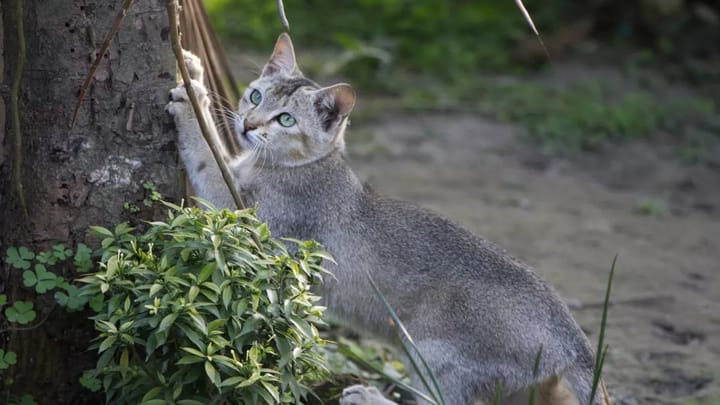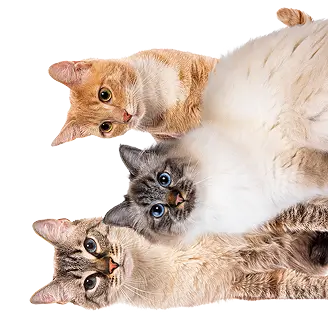Ceylon
Other names : Ceylan Cat, Sri Lankan Cat

The Ceylon originates, as its name suggests, from the island of Ceylon, which has since become part of Sri Lanka. They arrived in Europe for the first time in 1984 in Milan (Italy). They are an extremely rare breed and only a few individual Ceylon cats can currently be found in Italy and France. The breed recognised by the International Feline Federation until 1993. They are active cats, that love coconut pulp, just affirming their tropical origins!
|
Life expectancy |
The Ceylon has a life expectancy of between 14 and 16 years |
|
Temperament |
|
|
Adult size |
Female
Between 10 and 12 in
Male
Between 12 and 14 in
|
|
Adult weight |
Female
Between 7 and 11 lb
Male
Between 9 and 13 lb
|
|
Coat colour
Black / blue, red, tortoiseshell . Their coat is ticked, which means that their individual hairs are striped with alternating light and dark coloured bands. |
Black Red Cream Blue |
|
Type of coat
Short, almost no undercoat |
Short |
|
Eye colour
Yellow or green |
Green
Yellow
|
To make a friend for life, offer your Ceylon coconut pulp: it's their guilty pleasure!
More details about the Ceylon
Ceylon: Origins and history
In 1984, the Director of the Colombo Zoo authorised Veterinary Doctor Paolo Pellegatta to return to Milan (Italy) with 6 Ceylon cats. He started a breeding programme with them. However, the breed remains quite unknown and it is extremely rare to meet a Ceylon!
Physical characteristics of the Ceylon
Ceylons are medium sized, semi-cobby cats, who interestingly have slightly shorter front legs than its hind legs. One of the main characteristics of this breed is the pronounced angle formed by their real legs. Ceylons have a thin but muscular frame. They have reasonably round heads that are small compared to their bodies, and short noses. They have big eyes, and medium to large ears with rounded tips.
These cats can be both active and calm. They are good hunters in their natural environment due to their agility but they also know how to be affectionate with their owners, and often demand their presence and attention. Ceylons are sociable cats and can easily adapt to life inside. However there are differences in temperament depending on the individual.
Ceylon: Characteristics
Ceylon: Behaviour
Breed compatibility Ceylon
Ceylon: Purchase price
We do not have enough data to set an average price for a Ceylon cat. Because of it's rarety, this cat can cost a lot of money. As well, the price will vary according to their age and sex.
It costs on average £35 / month to provide for its needs, to provide a good quality diet and to keep him in good health.
Ceylon: Shedding
Light
Ceylon’s short hair and almost complete lack of an undercoat means they don’t leave their hair everywhere!
Ceylon: Grooming
Fur maintenance is easy as their short hair does not require daily brushing.
Ceylon: Health
On average the Ceylon lives for 14 to 16 years.
Due to their Sri Lankan origins, these cats are more adapted to warm weather than cold weather.
Due to their very active nature Ceylons generally burn a lot of energy. These cats don’t tend to be overweight.
Ceylons are robust cats and there are no illnesses particular to the breed. However, they can develop the same common illnesses as domestic cats. If they have external access, it is a good idea to vaccinate them against infectious diseases such as Coryza, Leucosis, Rabies (in countries where rabies is present) and Typhus. Also, they can be prone to periodontal diseases (gingivitis and tartar) and therefore dental care is highly recommended.
No cross breeding is allowed.

